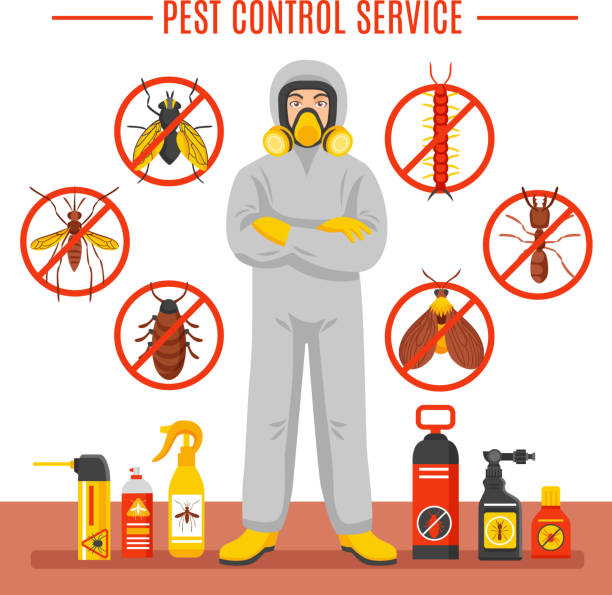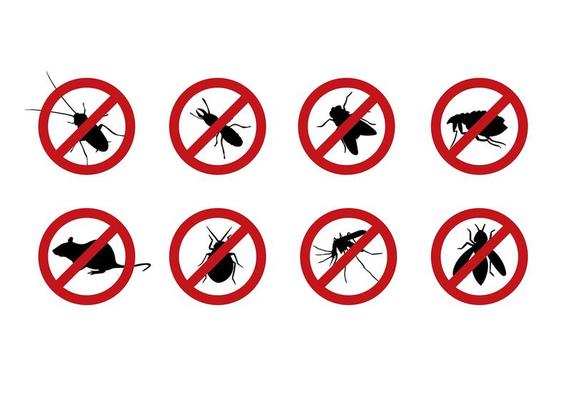Protect Your Property and Loved Ones with Help from Pest Control Lockhart
Checking Out Invasion and Treatment Strategies on the planet of Bug Control
The landscape of bug control includes a myriad of challenges, specifically as invasions of common home insects proceed to develop. Comprehending the behaviors and reproductive patterns of these problems is vital for creating effective treatment strategies. By integrating preventative steps with advanced monitoring techniques, such as Integrated Insect Administration (IPM), home owners can much better safeguard their atmospheres. However, the effectiveness of these methods may differ dramatically based upon details situations. What hidden variables add to the success or failing of these techniques in different settings?

Usual House Pests
When it concerns handling our living rooms, comprehending common household insects is essential. These bugs not just disrupt our convenience however can additionally present wellness dangers and damages residential property. The most common home pests include ants, roaches, rodents, termites, and bed bugs.
Ants, commonly seen foraging in kitchen areas, can pollute food and develop big swarms. Cockroaches, understood for their durability, can set off allergies and spread pathogens. Rats, consisting of computer mice and rats, can trigger structural damages and bring illness like hantavirus and salmonella. Termites, frequently described as "silent destroyers," can endanger the honesty of wood frameworks, bring about costly repair services. Bed pests, although not condition providers, can trigger substantial discomfort with their bites and bring about emotional distress.
Acknowledging the signs of these pests, such as droppings, nests, or bite marks, is important for very early treatment (Pest Control Lockhart). Correct cleanliness techniques, securing access factors, and preserving a clutter-free environment are reliable preventative actions. By identifying these usual family parasites and recognizing their habits, home owners can take positive actions to minimize invasions, guaranteeing a healthier living atmosphere
Comprehending Insect Infestations
Pest problems can escalate quickly, turning a small annoyance right into a considerable problem if not attended to quickly. Typical variables adding to problems consist of poor sanitation, structural susceptabilities, and seasonal modifications that drive parasites indoors.
Determining the kind of bug is vital, as different varieties show diverse behaviors and reproductive rates. As an example, rats may establish nests in hidden areas while pests like cockroaches prosper in damp atmospheres. Early discovery often depends upon identifying signs such as droppings, munch marks, or unusual sounds, which can indicate a problem prior to it comes to be serious.
Warm, moist climates can assist in the rapid growth of parasite populations, while modifications in landscape design or construction can unintentionally create favorable settings. An informed method to recognizing these characteristics lays the groundwork for efficient parasite management techniques in the future.
Therapy Approaches and Techniques
Efficient therapy approaches and techniques are vital for alleviating parasite infestations and bring back a risk-free setting. A complex approach is typically best, including chemical, biological, and mechanical techniques weblink tailored to the certain pest and the intensity of the invasion.
Chemical treatments include making use of pesticides and herbicides, which can effectively eliminate pests. However, appropriate application and adherence to security guidelines are vital to lessen threats to human beings and non-target microorganisms. Integrated Bug Administration (IPM) motivates the cautious use of chemicals as a last resource, relying rather on surveillance and limit levels to identify intervention needs.
Biological control approaches include introducing all-natural predators or bloodsuckers to minimize bug populaces. This method is increasingly preferred, especially in farming settings, as it advertises environmental sustainability.
Mechanical methods, such as catches and barriers, supply immediate alleviation from insects without presenting chemicals. Options consist of sticky traps for pests or physical barriers for rats.
Ultimately, the option of treatment technique should think about the specific bug, the environment, and prospective effect on human health and wellness and ecosystems. A well balanced mix of these techniques can properly manage invasions while advertising long-term bug control solutions.
Precautionary Actions for Homes
Proactively attending to bug problems prior to they escalate is important for preserving a healthy and balanced home setting (Pest Control Lockhart). Executing reliable safety nets can dramatically reduce the possibility of problems, inevitably safeguarding both your building and health

Appropriate landscaping also plays an important function in prevention. Keeping shrubs and trees cut away from your home lowers the opportunities of parasites locating their method inside your home. Additionally, guarantee that drainage systems are operating successfully to prevent standing water, which can reel in mosquitoes and other pests.
Last but not least, regular evaluations are recommended. Routinely looking for indicators of insect activity permits early intervention. By taking on these safety nets, home owners can produce an environment that is much less congenial to pests, therefore improving their total high quality of life and reducing the demand for comprehensive pest control treatments.
Commercial Bug Control Techniques
A thorough method to business insect control is crucial for organizations intending to preserve a secure and hygienic setting. Effective methods entail a combination of normal inspections, worker training, and the execution of Integrated Insect Monitoring (IPM) practices.
Routine examinations enable early discovery of pest activity, enabling for prompt intervention. Companies need to develop a routine schedule for these analyses, concentrating on high-risk areas such as kitchen areas, storeroom, and waste disposal sites. Worker training is just as crucial; personnel must be educated on the signs of bug problems and the importance of reporting them instantly.
Carrying out IPM techniques aids mitigate pest issues sustainably. This includes habitat adjustment, such as sealing entrance points and minimizing mess, in addition to using all-natural deterrents prior to turning to chemical therapies.

Additionally, teaming up with a qualified parasite control supplier makes go to this web-site sure accessibility to specialist expertise and sophisticated therapy choices. This partnership can result in customized pest control plans customized to the details demands of the service, lessening dangers and enhancing overall efficiency. Inevitably, a positive and educated approach cultivates a pest-free setting, click to read securing both public health and wellness and company reputation.
Verdict
In verdict, efficient pest control demands a detailed understanding of typical household bugs and their habits, coupled with targeted therapy methods. Applying preventative steps alongside therapy approaches such as Integrated Bug Management and organic control improves the capacity to alleviate infestations. Routine inspections and a mix of chemical and mechanical services better add to keeping pest-free settings. Eventually, a well-shaped approach to pest monitoring is vital for securing living areas from undesirable trespassers.